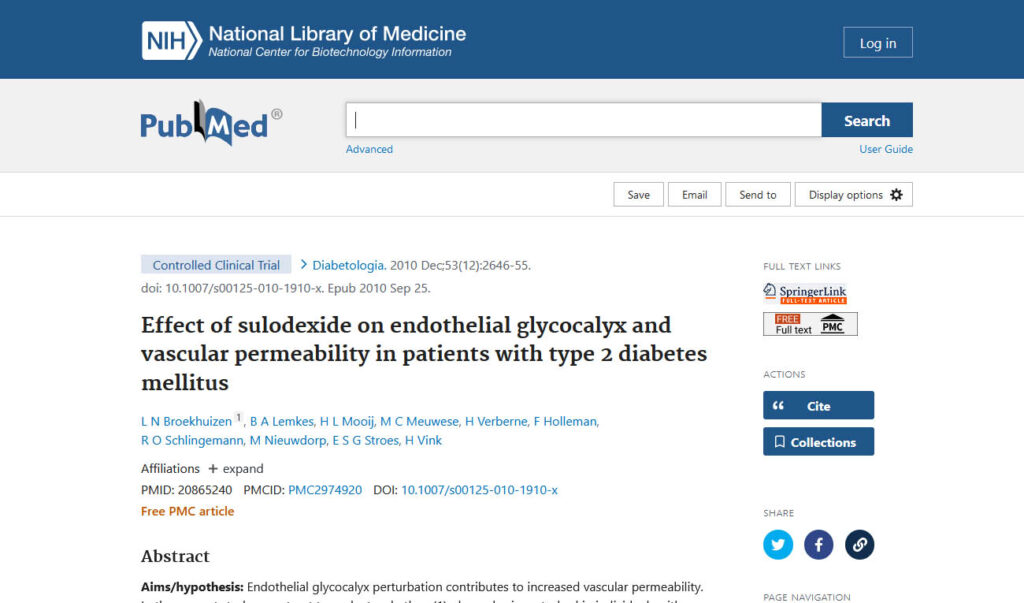Abstract
Aims/hypothesis: Endothelial glycocalyx perturbation contributes to increased vascular permeability. In the present study we set out to evaluate whether: (1) glycocalyx is perturbed in individuals with type 2 diabetes mellitus, and (2) oral glycocalyx precursor treatment improves glycocalyx properties.
Methods: Male participants with type 2 diabetes (n = 10) and controls (n = 10) were evaluated before and after 2 months of sulodexide administration (200 mg/day). The glycocalyx dimension was estimated in two different vascular beds using sidestream dark field imaging and combined fluorescein/indocyanine green angiography for sublingual and retinal vessels, respectively. Transcapillary escape rate of albumin (TER(alb)) and hyaluronan catabolism were assessed as measures of vascular permeability.
Results: Both sublingual dimensions (0.64 [0.57-0.75] μm vs 0.78 [0.71-0.85] μm, p < 0.05, medians [interquartile range]) and retinal glycocalyx dimensions (5.38 [4.88-6.59] μm vs 8.89 [4.74-11.84] μm, p < 0.05) were reduced in the type 2 diabetes group compared with the controls whereas TER(alb) was increased (5.6 ± 2.3% vs 3.7 ± 1.7% in the controls, p < 0.05). In line with these findings, markers of hyaluronan catabolism were increased with diabetes (hyaluronan 137 ± 29 vs 81 ± 8 ng/ml and hyaluronidase 78 ± 4 vs 67 ± 2 U/ml, both p < 0.05). Sulodexide increased both the sublingual and retinal glycocalyx dimensions in participants with diabetes (to 0.93 [0.83-0.99] μm and to 5.88 [5.33-6.26] μm, respectively, p < 0.05). In line, a trend towards TER(alb) normalisation (to 4.0 ± 2.3%) and decreases in plasma hyaluronidase (to 72 ± 2 U/ml, p < 0.05) were observed in the diabetes group.
Conclusion/interpretation: Type 2 diabetes is associated with glycocalyx perturbation and increased vascular permeability, which are partially restored following sulodexide administration. Further studies are warranted to determine whether long-term treatment with sulodexide has a beneficial effect on cardiovascular risk.


